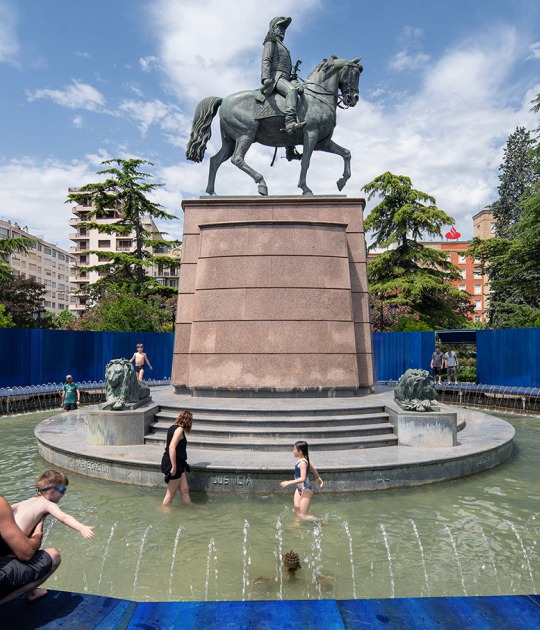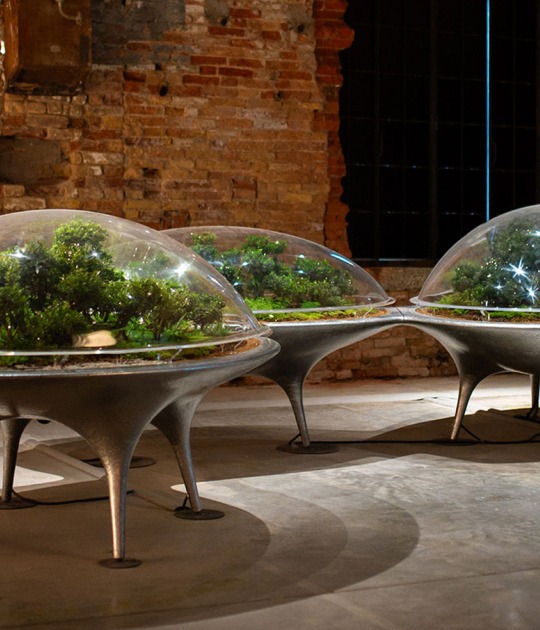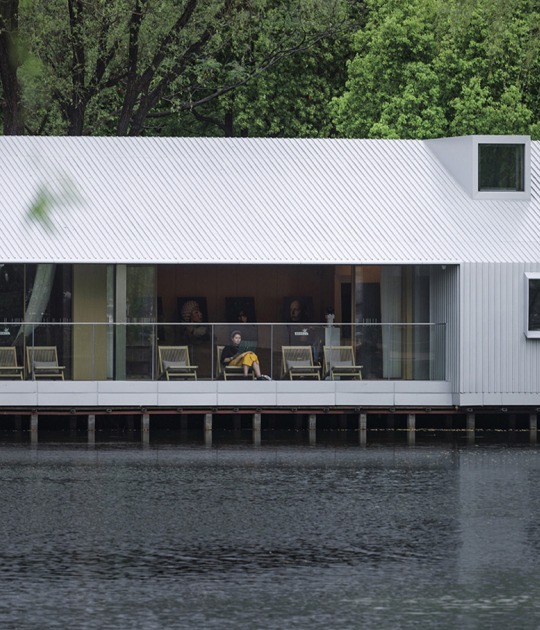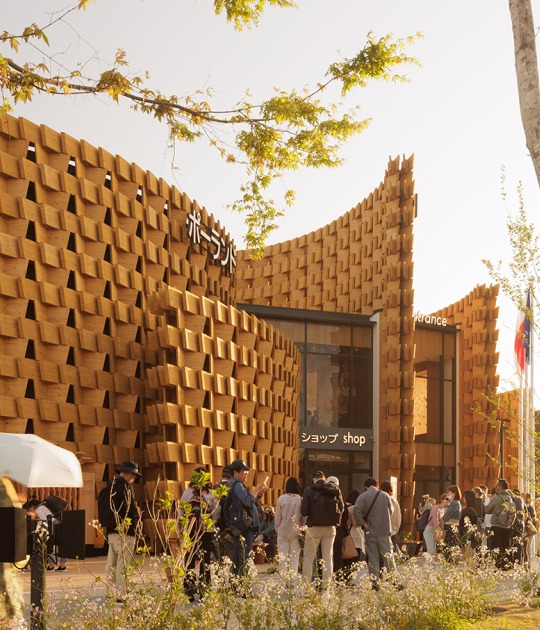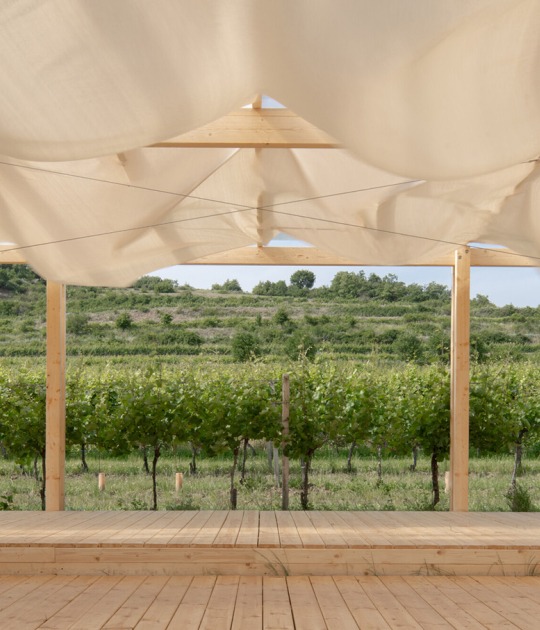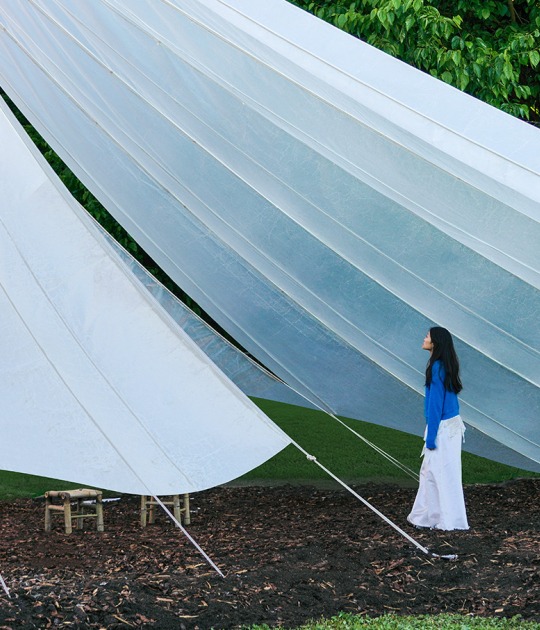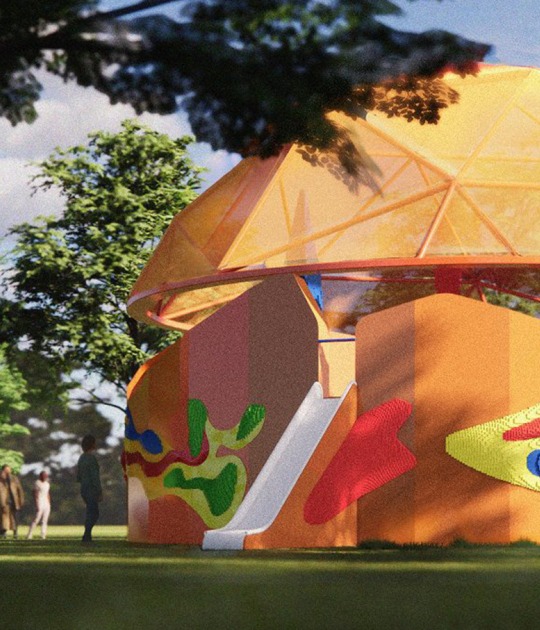
OMNO lab's proposal was inspired by traditional Tibetan residential architecture. Therefore, they used black charred wood for the cabin's structure to blend in with the adjacent forest and create a distinctive black symbol. They also wanted viewers from afar to perceive the building's symmetry, only to later discover the intentional asymmetry within it.
OMNO lab prioritized sustainability and local materials in the choice of structure and materials to reduce local impact. In the exterior, they used sloping panels, reminiscent of fish scales, creating a series of openings for the bees' free movement. Porous red bricks were used for the floor, which, combined with the black color of the wood, draws the visitor's attention and invites them to enter. Meanwhile, a Tibetan-Han-style eaves structure was incorporated into the roof. The roof panels helped diffuse light and ensure natural lighting thanks to their curved shape. All these elements evoke the solidity of traditional Tibetan architecture.

Shannan Beehive Observation Cabin by OMNO lab. Photograph by Qiwei Wang.
Project description by OMNO lab
The Beehive Observation Project is situated amidst the mountains in Jieba Township, Shannan City, on the roof of the world in Tibet. Originally, it was an orchard cultivated by the Tibetan ancestors of Jieba Township 60 years ago and has now transformed into a honey bee foraging area.
Our commission was to design a space for showcasing the life of bees and providing visitors with a hands-on honey harvesting experience. Given the fragile ecology of the high-altitude plateau, we prioritized sustainability and local materials in the structural and material choices to minimize impact on the natural terrain. Due to the intense ultraviolet radiation and minimal precipitation characteristic of high-altitude regions, we opted for corrosion-resistant black carbonized wood as the primary building material. The use of black color aimed to blend the structure into the surrounding forest while forming a distinctive black landmark symbol.

In terms of design concept, we drew inspiration from the traditional architecture of Tibetan residences, employing lightweight and thin wooden components to simulate the robustness of brick and stone walls. The exterior design echoed the inclined forms found in traditional Tibetan architecture. The fish scale-like, sloping outer panels created openings for free bee movement. This construction logic with thin wooden elements sought to evoke the solidity of traditional Tibetan architecture when visitors saw the Beehive Observation Project.
Internally, our goal was to create a contradictory ambiance—both transparent and enclosed, reminiscent of a religious sanctuary for bees. In contrast to the external symmetry, the internal layout and functionality displayed an intentional asymmetry. The intention was for observers to perceive symmetry from a distance, only to discover internal asymmetry upon entering.

For the flooring, we chose red porous bricks as a material that could harmonize with the primitive architecture of the countryside, with the red and black color scheme drawing attention to the entrance.
In the roof design, we incorporated elements from traditional Tibetan architecture, specifically the Han-Tibetan-style eaves structure. Bare aluminum panels not only echoed traditional roofing materials but also enhanced sunlight diffusion through curved shapes, ensuring a more balanced natural light inside.

The construction process of this project eschewed modern construction teams and instead involved local villagers and carpenters who, over the course of one week, assembled the structure on the basis of prefabricated materials, a collaborative effort between architects, local villagers, and indigenous carpenters.





































